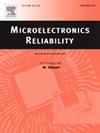Lifetime prediction for power modules in wind-energy converters based on temperature variations in a large area substrate solder connection
IF 1.6
4区 工程技术
Q3 ENGINEERING, ELECTRICAL & ELECTRONIC
引用次数: 0
Abstract
Accurately modelling the lifetime of a power module is a major concern in wind power applications. Their lifetime is typically modelled via empirical laws fitted to data, e.g. from power cycling tests. Often, those models are parametrized with respect to junction temperatures due to its measurability and failure mechanisms occurring close to the chip. Nevertheless, some module types are limited by their large area substrate solder between the baseplate and substrate metallization. They motivate to choose the substrate solder temperatures for a lifetime model instead. Furthermore, transient effects are conceivable which lead to an ambiguous relation between substrate solder and junction temperatures. Thus, for such a model, a substitution of junction temperatures with substrate solder temperatures is carried out to derive a model based on substrate solder temperatures. Afterwards, the influence on lifetime estimation is investigated. For this purpose, the thermal behavior of a PrimePack™2.XT during power cycling is studied, utilizing reduced order models. Lifetime calculations with a junction and a substrate solder temperature-based model on a mission profile from a wind application show that the latter yields a significantly higher lifetime. A shift in the ratio between substrate solder temperature and junction temperature during operation towards a lower regime compared to the power cycling test is identified as the root cause for this. It is shown that from a physical perspective, this result is realistic and a lifetime modelling with respect to substrate solder temperatures increases the accuracy of lifetime prediction in this case.
基于大面积衬底焊料连接温度变化的风能变流器功率模块寿命预测
在风力发电应用中,准确建模电源模块的寿命是一个主要问题。它们的寿命通常通过与数据相适应的经验规律建模,例如来自功率循环测试。通常,由于结温的可测量性和发生在芯片附近的失效机制,这些模型被参数化。然而,一些模块类型受到底板和基板金属化之间大面积基板焊料的限制。他们鼓励选择终身模型的衬底焊料温度。此外,瞬态效应是可以想象的,这导致衬底焊料和结温之间的关系不明确。因此,对于这样的模型,将结温度替换为衬底焊料温度,以导出基于衬底焊料温度的模型。然后,研究了对寿命估计的影响。为了达到这个目的,PrimePack™2的热性能。利用降阶模型研究了功率循环过程中的XT。基于风力应用任务剖面的结和基板焊料温度模型的寿命计算表明,后者的寿命明显更高。与功率循环测试相比,在操作期间衬底焊料温度和结温之间的比率向较低的状态转移被认为是造成这种情况的根本原因。从物理角度来看,这一结果是真实的,并且在这种情况下,关于衬底焊料温度的寿命建模增加了寿命预测的准确性。
本文章由计算机程序翻译,如有差异,请以英文原文为准。
求助全文
约1分钟内获得全文
求助全文
来源期刊

Microelectronics Reliability
工程技术-工程:电子与电气
CiteScore
3.30
自引率
12.50%
发文量
342
审稿时长
68 days
期刊介绍:
Microelectronics Reliability, is dedicated to disseminating the latest research results and related information on the reliability of microelectronic devices, circuits and systems, from materials, process and manufacturing, to design, testing and operation. The coverage of the journal includes the following topics: measurement, understanding and analysis; evaluation and prediction; modelling and simulation; methodologies and mitigation. Papers which combine reliability with other important areas of microelectronics engineering, such as design, fabrication, integration, testing, and field operation will also be welcome, and practical papers reporting case studies in the field and specific application domains are particularly encouraged.
Most accepted papers will be published as Research Papers, describing significant advances and completed work. Papers reviewing important developing topics of general interest may be accepted for publication as Review Papers. Urgent communications of a more preliminary nature and short reports on completed practical work of current interest may be considered for publication as Research Notes. All contributions are subject to peer review by leading experts in the field.
 求助内容:
求助内容: 应助结果提醒方式:
应助结果提醒方式:


